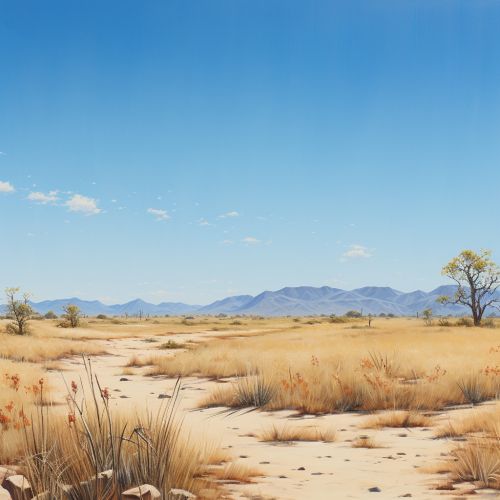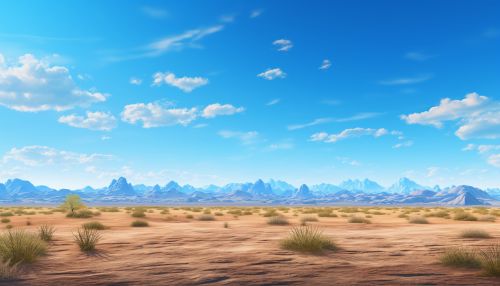Desert Biomes
Introduction
A desert biome is a type of ecosystem characterized by low rainfall, arid conditions, and a variety of plant and animal species adapted to survive in such an environment. Deserts cover about one-fifth of the Earth's surface and occur where rainfall is less than 50 cm a year. Although most deserts, such as the Sahara and the Kalahari, are hot and dry, some deserts are cold, like the Gobi in Asia and the desert on the continent of Antarctica.


Characteristics of Desert Biomes
Desert biomes are defined by their limited precipitation, extreme temperatures, and specific types of vegetation. The primary physical factor defining a desert is aridity. Deserts receive less than 25 cm of precipitation annually, which makes water extremely scarce. The climate is one of the most significant factors in shaping the desert landscape and the organisms that can live there.
Climate
Desert climates can be classified into four main types: subtropical, cool coastal, cold winter, and polar. Each type has a different pattern of temperature and precipitation. Subtropical deserts, like the Sahara, are hot all year round, while cool coastal deserts, such as the Atacama in Chile, are cooler due to the influence of cold ocean currents. Cold winter deserts have hot summers and cold winters, while polar deserts are cold all year round.
Soil
Desert soils, known as Aridisols, are usually nutrient-poor and have low organic content. The lack of vegetation exposes the unprotected surface of the ground to the processes of denudation. About one-third of the Earth's land surface is arid, including much of the polar regions where little snow or rain falls, and which are sometimes called "cold deserts".
Flora and Fauna
Desert biomes have a rich diversity of life. Plants and animals living in the desert need special adaptations to survive in the harsh environment. Plants such as cacti, yucca, and aloe have adaptations like reduced leaf area and waxy cuticles to prevent water loss. Animals, such as the fennec fox, dromedary camel, and kangaroo rat, have adaptations like nocturnal behavior and specialized kidneys to survive the arid conditions.
Desert Ecosystems
Despite the harsh conditions, deserts are complex ecosystems with a variety of species and interactions. The organisms in desert ecosystems have adapted to the extreme conditions through a variety of survival strategies. These adaptations include physiological changes, morphological modifications, and behavioral shifts that enable them to conserve water, reduce heat, and find food.
Energy Flow
The energy flow in desert ecosystems is similar to other biomes, with the sun providing the primary source of energy. This energy is captured by producers, such as plants, and transferred through the ecosystem via consumers and decomposers. However, the scarcity of water and extreme temperatures can limit the productivity of desert ecosystems.
Nutrient Cycling
In desert ecosystems, nutrient cycling is slow due to the low levels of primary productivity. The lack of water and organic material in the soil also reduces the activity of decomposers, slowing the release of nutrients back into the ecosystem. However, when it does rain, nutrients are quickly cycled through the system as dormant seeds germinate and grow rapidly.
Human Impact on Desert Biomes
Humans have a significant impact on desert biomes. Activities such as mining, overgrazing, and urbanization have led to desertification in many parts of the world. Desertification is a serious environmental issue that affects the livelihoods of millions of people worldwide.
Conservation of Desert Biomes
Conservation of desert biomes is crucial due to their unique biodiversity and the ecosystem services they provide. Efforts to conserve desert biomes include establishing protected areas, promoting sustainable land use practices, and conducting research to understand the impacts of climate change on these fragile ecosystems.
